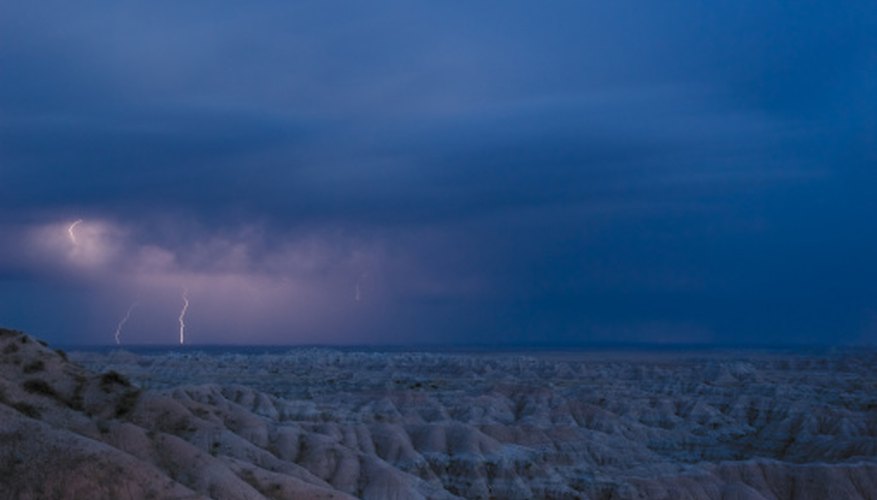From D&D Wiki
- Difference Between Lightning And Thunder Dmg Dnd 3
- Difference Between Lightning And Thunder Dmg Dnd 3
- Difference Between Lightning And Thunder Dmg Dnd Download
Jump to: navigation, search
| This material is published under the OGL |


Thunder and Lightning: Constructed of iron set with silver rivets, this rod has the properties of a +2 light mace. Its other magical powers are as follows.

Lightning: (Electrical) Summoned from the forces of nature, Lightning can be wielded as a deadly tool in battle. Causing electrical damage to an opponent, this may take the form of Electrical Burning, heart convulsions, nerve damage, Paralysis or even brain damage. The Orc Seer called from the sky a great spark of lightning.
- I'd have to check my MM at home, but I'd expect electricity to be lightning damage and that's how I'd rule it for resistances. Thunder damage would be 'sonic'. That is consistent with the description of how both thunder wave (sound heard 300ft off) and shatter (things made of shatterable material have disadvantage) work.
- Purchasing this pre-order will immediately unlock 6 exclusive character sheet backgrounds created from art in the book. On June 2nd, the entire digital book will unlock for use with D&D Beyond, including the sourcebook in digital format and access to all the sourcebook's options in the searchable listings, character builder, and digital sheet.
- Thunder: Once per day, the rod can strike as a +3 light mace, and the opponent struck is stunned from the noise of the rod’s impact (FortitudeDC 16 negates). Activating this power counts as a free action, and it works if the wielder strikes an opponent within 1 round.
- Lightning: Once per day, when the wielder desires, a short spark of electricity can leap forth when the rod strikes an opponent to deal the normal damage for a +2 light mace (1d6+2) and an extra 2d6 points of electricity damage. Even when the rod might not score a normal hit in combat, if the roll was good enough to count as a successful melee touch attack hit, then the 2d6 points of electricity damage still applies. The wielder activates this power as a free action, and it works if he strikes an opponent within 1 round.
Difference Between Lightning And Thunder Dmg Dnd 3
- Thunderclap: Once per day as a standard action, the wielder can cause the rod to give out a deafening noise, just as a shoutspell (FortitudeDC 16 partial, 2d6 points of sonic damage, target deafened for 2d6 rounds).
- Lightning Stroke: Once per day as a standard action, the wielder can cause the rod to shoot out a 5-foot-wide lightning bolt (9d6 points of electricity damage, ReflexDC 16 half ) to a range of 200 feet.
Difference Between Lightning And Thunder Dmg Dnd 3
- Thunder and Lightning: Once per week as a standard action, the wielder of the rod can combine the thunderclap described above with a lightning bolt, as in the lightning stroke. The thunderclap affects all within 10 feet of the bolt. The lightning stroke deals 9d6 points of electricity damage (count rolls of 1 or 2 as rolls of 3, for a range of 27 to 54 points), and the thunderclap deals 2d6 points of sonic damage. A single DC 16 Reflex save applies for both effects.
Moderate evocation; CL 9th; Craft Rod, Craft Magic Arms and Armor, lightning bolt, shout; Price 33,000 gp.
Back to Main Page → 3.5e Open Game Content → System Reference Document → Magic Items
| This is part of the (3.5e) Revised System Reference Document. It is covered by the Open Game License v1.0a, rather than the GNU Free Documentation License 1.3. To distinguish it, these items will have this notice. If you see any page that contains SRD material and does not show this license statement, please contact an admin so that this license statement can be added. It is our intent to work within this license in good faith. |
Difference Between Lightning And Thunder Dmg Dnd Download
Retrieved from 'https://www.dandwiki.com/w/index.php?title=SRD:Rod_of_Thunder_and_Lightning&oldid=351835'